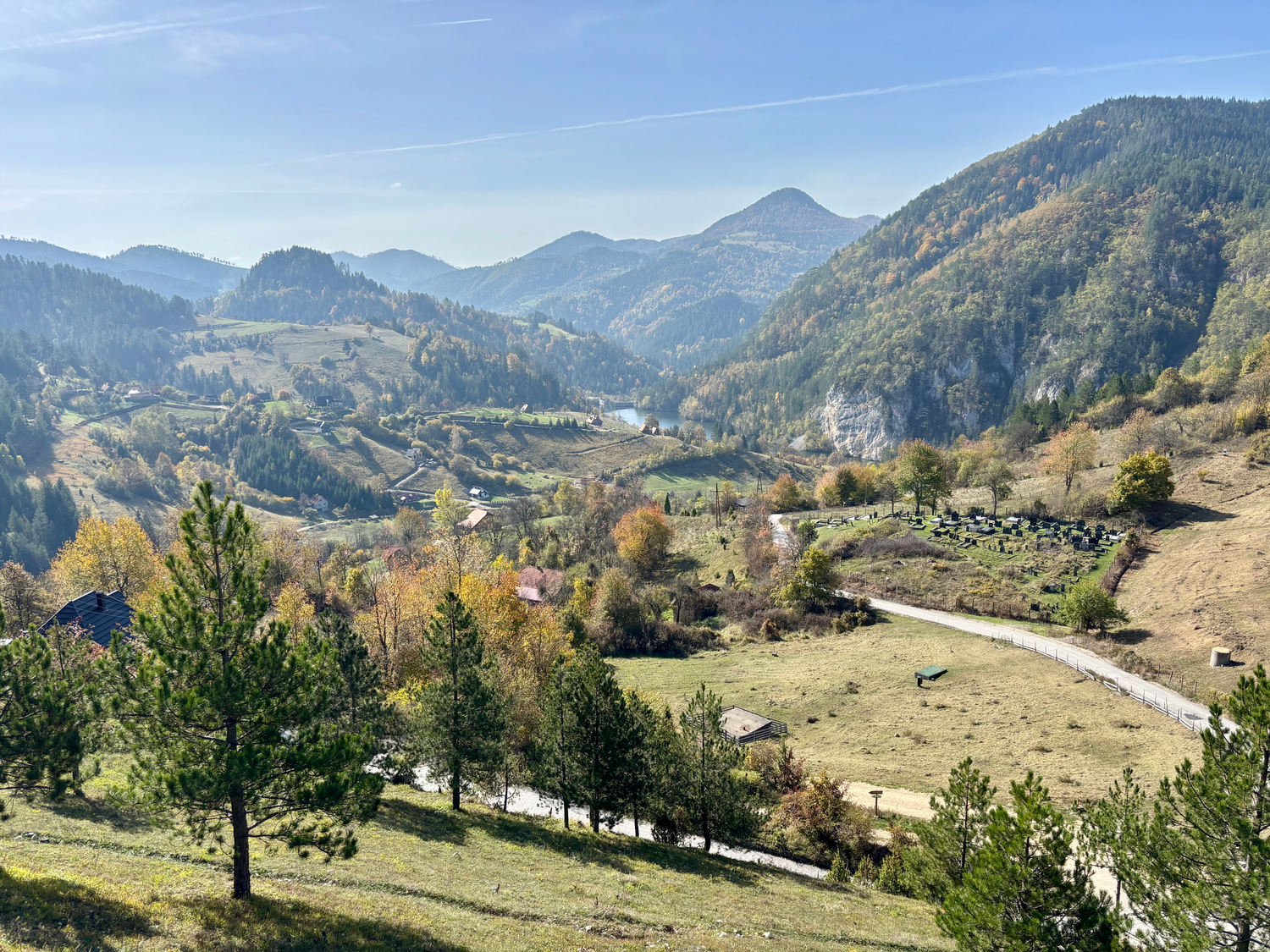
The Road South—Two Weeks Through Serbia and North Macedonia
After saying our goodbyes to the family in Bosnia, we packed up the car, ready to explore the unknown and start the journey we had longed for. The signs of winter were slowly appearing, heading south felt like the right decision. It wasn’t only the cold we were escaping. With winter comes the traditional wood-stoves, and when combined with diesel cars and indoor smoking, the air quality becomes almost unbearable in the cold. With the Greek sun as our ultimate destination, we figured we had just a couple of weeks to explore these countries before winter sets in. The route through Serbia and North Macedonia, often overlooked by tourism, promised the off-the-beaten-path adventure that excited us.
Serbia: rough history and nature
The first week of our road trip began in Novi Sad, Serbia—a lively city full of students, which gives it a relaxed vibe. As we were seeking more the calmed of nature, starting this trip in a city might seem like an odd choice. But Novi Sad’s proximity to the lush green hills of Fruska Gora National Park made it a perfect first stop. Therefore, instead of diving straight into the city, we put on our hike shoes to enjoy the sunny days in the green hills. It felt good to be back on the trails, after a month away from hiking.
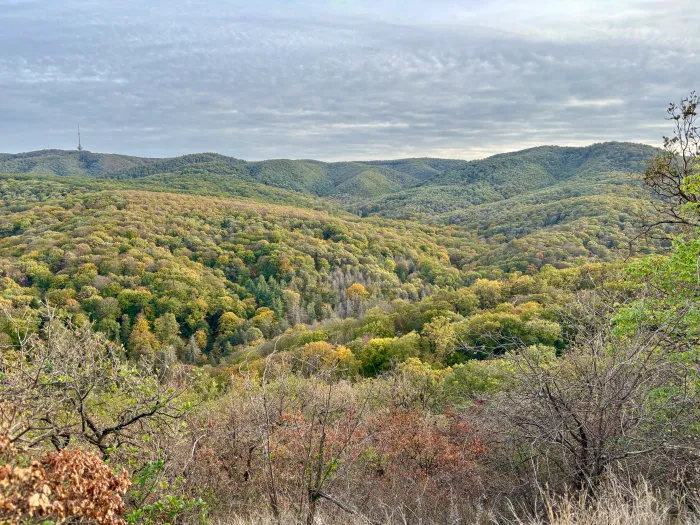
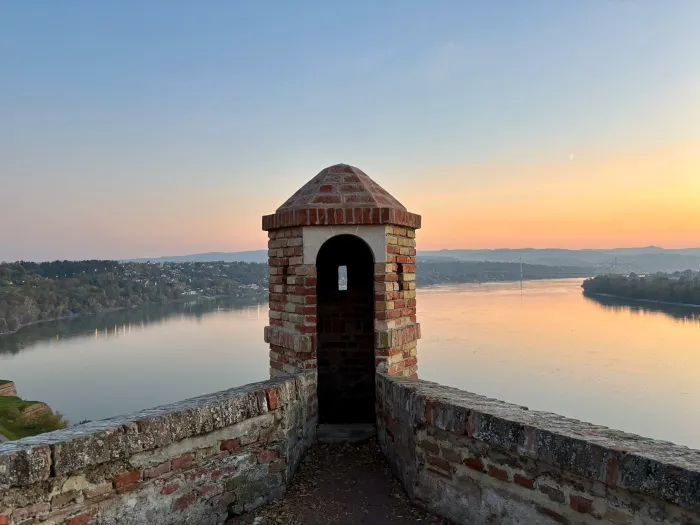
After soaking in the “vitamin green,” we were ready to see what the city had to offer. We started with a visit to the Petrovaradin Fortress, located on a hill on the other side of the river. The fortress offered stunning views of the old town and the hilly landscapes of Fruska Gora. From a distance, it was easy to spot Novi Sad’s largest church, the ‘Name of Mary’ Church. We knew we should head to the old town next.
Strolling through Novi Sad’s old town was an experience in itself. Free from the noise of cars, we wandered from plaza to square, and back again. The air was heavy with the irresistible aroma of Balkan cuisine—pita stuffed with ćevapi grilled on a barbecue coming out of each corner.
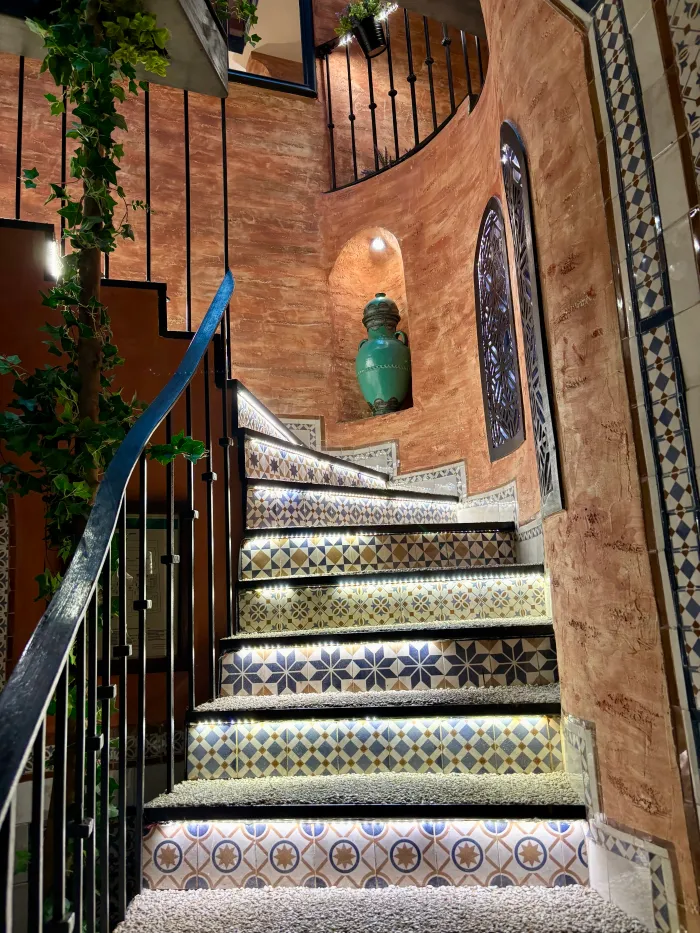
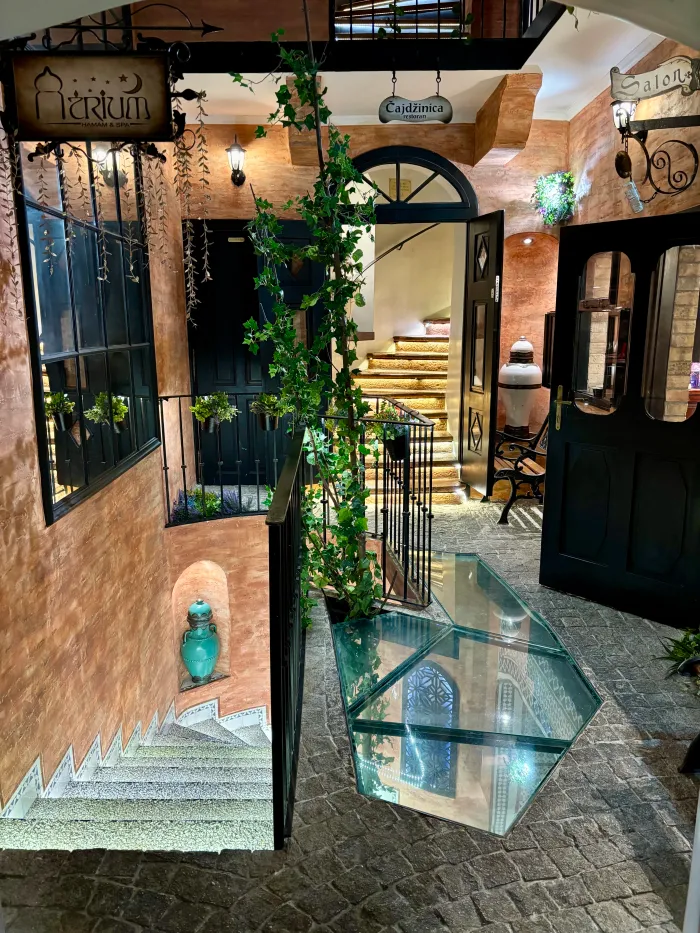
To finish of our week in Novi Sad with perfection, we treated ourselves to a four-hour retreat at the Atrium Hamam & Spa. The term “hidden gem” might be overused, but it truly applies here. If you don’t know about the existence of this spa ,I guarantee you could walk right past it without noticing. In fact, that’s exactly what we did ourselves at first. The oasis begins as soon as you walk through what seems like a regular door. The hustle and bustle of the big city—or perhaps even being in the modern times—immediately fade away. Preparing you for the full relaxing experience ahead.
However, as much as we enjoyed the beauty and hospitality of Novi Sad, the city also has its scars of the recent past. The devastation done by NATO’s bombardment during the Kosovo War of 1999 remains visible even today. Residential areas were hit multiple times by cluster bombs, as was the 175-meter-tall TV tower.
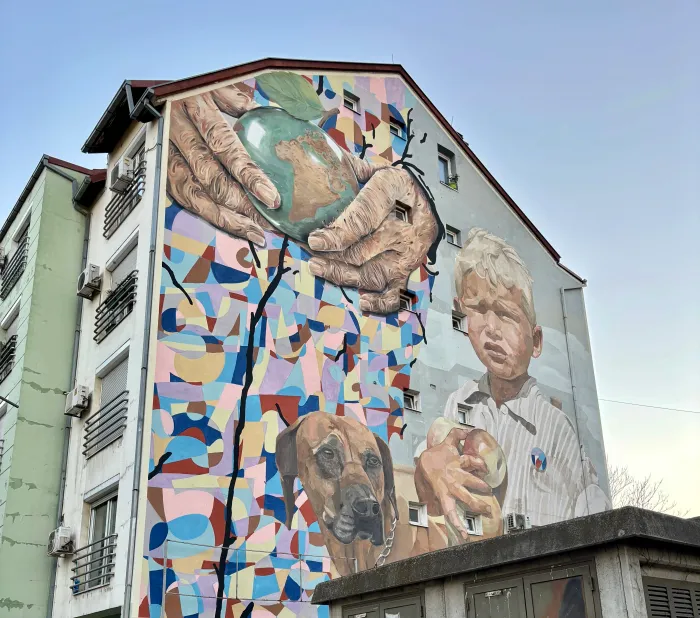
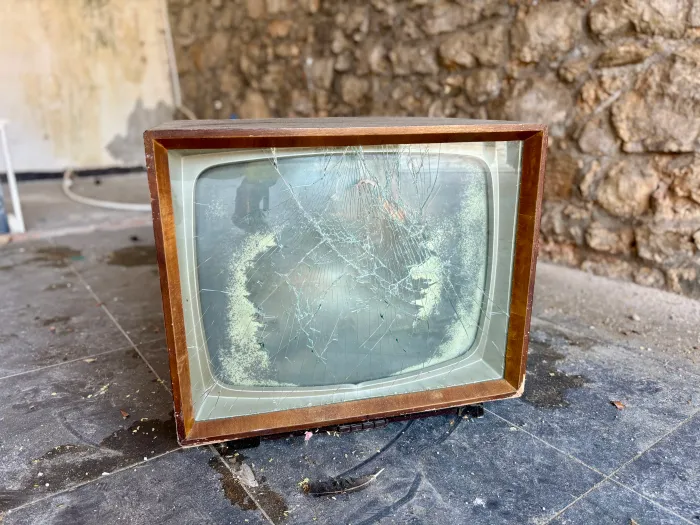
After a fantastic time in Novi Sad, we headed to Niš (pronounced as Neesh) with few expectations. We’d read a little about the city and its highlights, but we didn’t think it would be anything extraordinary. With only a day to explore,we put the warm clothes on and set out to work on our steps—and we ended up with over 22k!
Our first stop was Niš Fortress, built during Ottoman times covering 22 hectares. It was the perfect place to get lost in the history and greenery of the city. Niš itself is one of Serbia’s oldest cities, known as the birthplace of Roman Emperor Constantine the Great, and it has been shaped by various rulers over the centuries. While a couple of days is enough to take in the highlights, Niš left us pleasantly surprised.
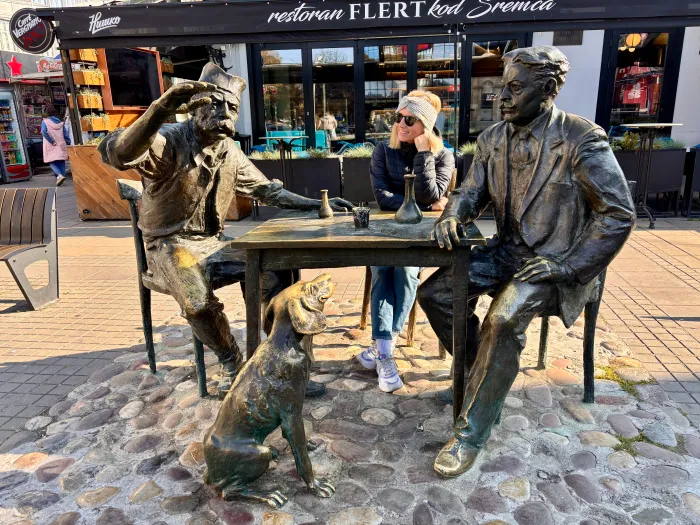
For a small getaway, we headed to Tara National Park, a mountain of the Dinaric Alps. It’s the perfect escape if you’re looking to leave the city behind and breathe in fresh air. Known not only for its lush green forests but also as the home of Serbia’s largest brown bear population. As of 2019, around 60 brown bears roamed the park, making up 80% of the country’s entire bear population. While the chances of encountering one are low, knowing we were in the heart of their territory added an exciting edge while hiking.
After navigating numerous switchbacks up the mountain, we finally reached our stay—a charming mountain cottage, fully equipped to battle the cold nights with its fireplace. The autumn had taken over the forest, transforming the landscape with it’s vibrant colors into something straight out of a fairy tale.
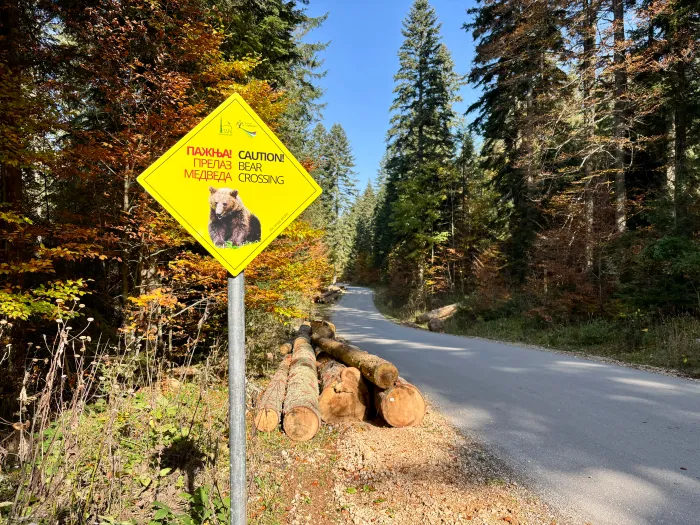
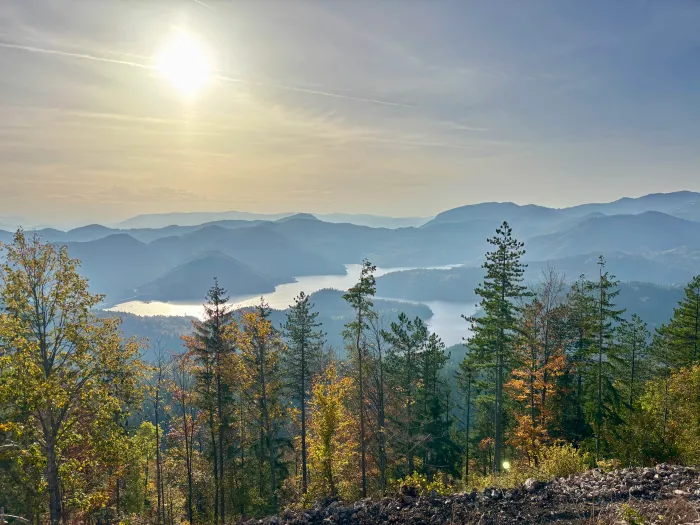
North Macedonia: a blend of everything
After skipping too many places in Serbia (we promise we’ll come back!), we found ourselves waiting in line at the border of North Macedonia. As usual, the heartwarming hospitality of the Balkans would have to wait until after we crossed the border. Especially when they discovered that our Green Card had expired by just a few days. Twenty-five bucks lighter as we needed to use our mobile data to verify our Green Card, we quickly resolved the issue and were ready to explore the country for the next week.
This time, we visited more cities than we normally would. Reliable internet for work was our priority, and bigger cities gave us a peace of mind in that regard. We booked a cozy apartment in Skopje, the capital city, which had us feeling prepared for the Greek sun with its overenthusiastic heating system.
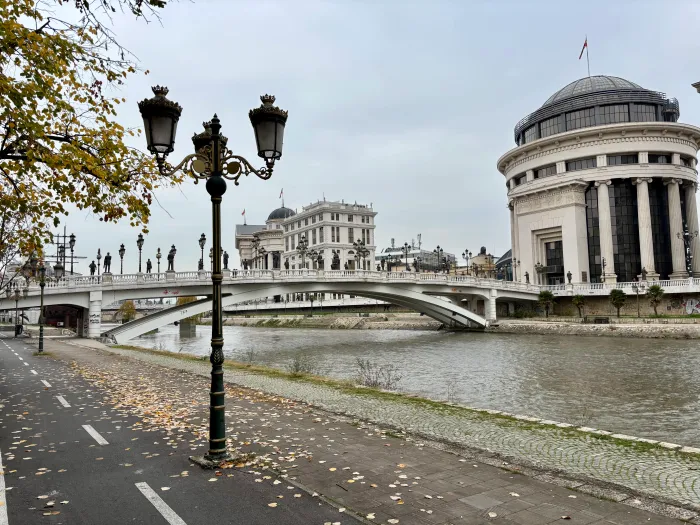
Describing Skopje in one word is hard. Its architecture—a strange mix of styles and eras—feels off. While many of the buildings are beautiful in their own right, they often seem out of place, as if pieced together without any thought. Despite this, the city is truly Balkan, with a friendly and safe atmosphere. Aleks speaking her mother’s language added an extra layer of ease to our day-to-day interactions, making the experience seamless and enjoyable.
One of the top results when researching North Macedonia is Lake Ohrid—and it’s easy to see why. Lake Ohrid is one of the oldest and deepest lakes in Europe, and the nearby town of Ohrid is also known as the “Jerusalem of the Balkans.” This UNESCO World Heritage Site is home to over 365 churches, one for each day of the year. The days became colder, and we experienced our first snowfall along our way to Ohrid. Despite the chill weather, we still wandered through its narrow streets, discovering ancient churches, and soaking up the cold November sun. The view of Saint John the Theologian Church, set against the stunning backdrop of the lake, can only be described as spectacular.
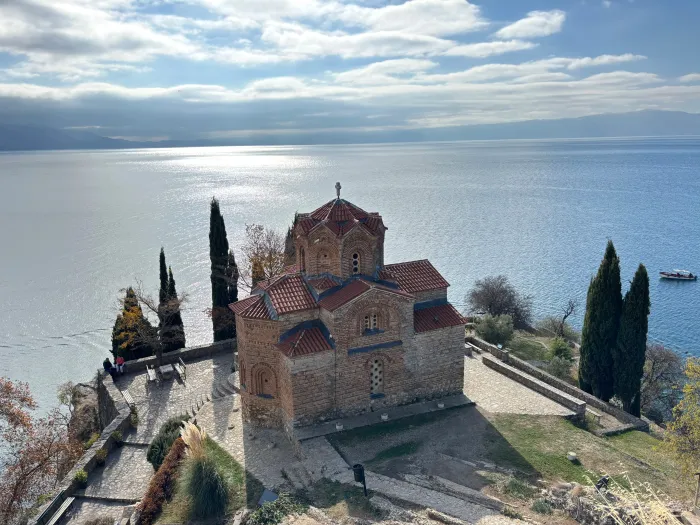
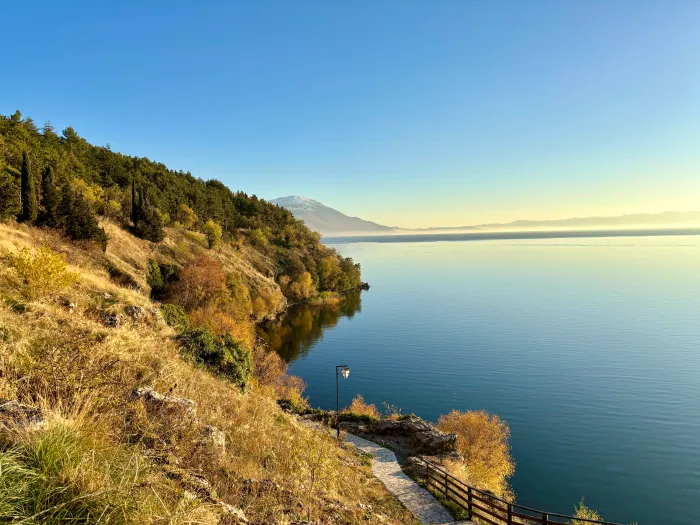
Just over an hour’s drive from Ohrid lies Bitola, North Macedonia’s second-largest city. While our honest reason for staying here was the affordable accommodation during our workweek, we ended up truly enjoying our time. Bitola was perfect for balancing our work with pleasant walks along Širok Sokak, a lively pedestrian street lined with cafés, shops, and its beautiful park. It was the ideal final stop before heading south to Greece.
As we wrapped up our time in North Macedonia, we started to reflect on how Serbia and North Macedonia handled their histories and hardships. Like their neighboring countries, they face challenges such as many stray animals and (plastic) waste in places where it definitely shouldn’t be. Despite these problems, we enjoyed with our whole heart their rich culture, delicious food, and the unique hospitality that makes the Balkans so special. It really is a great place to explore.